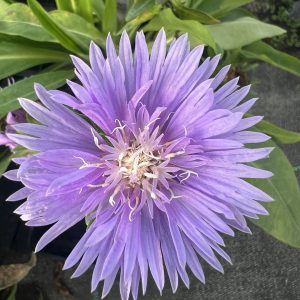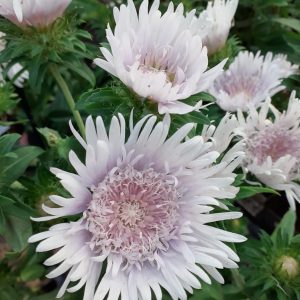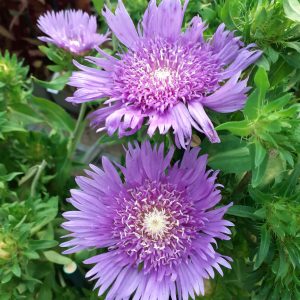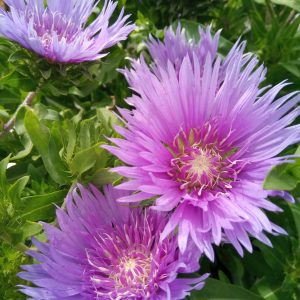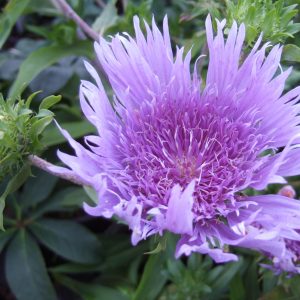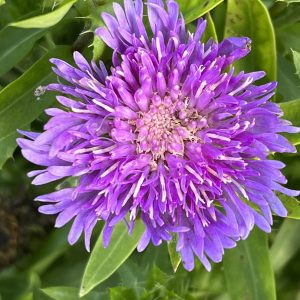Stokesia, commonly known as Stokes’ aster, is a beautiful perennial that produces striking, daisy-like flowers. Follow this comprehensive planting guide to ensure successful establishment and long-term growth of your Stokesia plants.
Choose the Right Location
Sun Exposure: Plant Stokesia in a location with full sun to partial shade. While it tolerates some shade, full sun generally promotes better blooming.
Protection from Afternoon Sun: In hotter regions, provide some afternoon shade to protect the plants from intense sunlight.
Soil Preparation
Well-Draining Soil: Stokesia prefers well-draining, loamy soil. Incorporate organic matter like compost to improve soil structure.
pH Level: Aim for a slightly acidic to neutral pH level, around 6.0 to 7.0.
Planting Time
Spring or Autumn: Plant Stokesia in the spring or autumn when the soil is workable. Avoid extreme weather conditions.
Spacing
Adequate Spacing: Space plants 12 to 18 inches apart to allow for proper airflow and prevent overcrowding.
Planting Depth
Proper Depth: Plant Stokesia at the same depth as they were in the nursery containers. Ensure the crown is at or slightly above soil level.
Watering
Regular Moisture: Keep the soil consistently moist during the growing season. Water deeply when the top inch of soil feels dry.
Mulch for Moisture Retention: Apply a layer of mulch around the base of the plants to retain soil moisture and suppress weeds.
Fertilisation
Balanced Fertiliser: Apply a balanced, slow-release fertiliser in spring as new growth emerges. Avoid excessive nitrogen, as Stokesia prefers moderate fertility.
Deadheading
Regular Removal of Spent Blooms: Deadhead faded flowers to encourage continuous blooming and maintain a neat appearance.
Pest and Disease Management
Vigilant Monitoring: Regularly inspect plants for pests such as aphids or spider mites. Treat any infestations promptly with insecticidal soap.
Good Air Circulation: Ensure proper spacing and good air circulation to minimise the risk of fungal diseases.
Winter Care
Mulching in Autumn: Apply a layer of mulch around the base of the plants in late autumn to protect the roots from extreme cold temperatures.
Pruning
Trimming for Shape: Prune back the plants in late autumn to remove dead or damaged growth and maintain a compact shape.
Division: Every few years, consider dividing clumps to rejuvenate the plant and maintain its vigour.
Observation and Adjustments
Regular Inspection: Keep a close eye on your Stokesia plants throughout the year. Adjust care practices based on observations of their health and performance.
Enjoying the Blooms
Stokesia flowers make wonderful cut flowers for floral arrangements. Harvest blooms for bouquets and enjoy their vibrant beauty indoors.
By following this planting guide, you can establish and maintain healthy Stokesia plants that will provide a delightful display of flowers in your garden.



